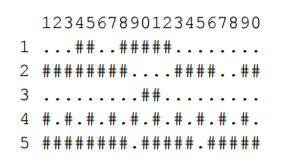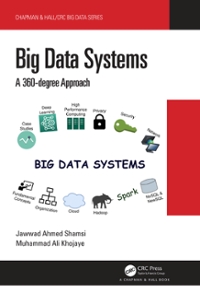Question
Objectives : Create a Java program using programming fundamentals (file I/O, loops, conditional statements, arrays, functions) Problem: In preparation for the release of Guardians of
Objectives: Create a Java program using programming fundamentals (file I/O, loops, conditional statements, arrays, functions) Problem: In preparation for the release of Guardians of the Galaxy 2, you have been hired by the owner of a small movie theater to develop the backend for an online ticket reservation system. Patrons will be able to reserve seats in one of three auditoriums. Once the patron has selected an auditorium, the program should display the current seating arrangement and allow the patron to select seats. A report should be generated at the end of the program to specify for each individual auditorium and overall for all auditoriums how many seats were sold/unsold and how much money was earned.
Details The seating arrangement for each auditorium will be stored in separate files. These files will be named A1.txt, A2.txt, and A3.txt for auditorium 1, 2 and 3 respectively.
Each line in the file will represent a row in the auditorium. The number of rows in each auditorium is unknown to you.
The number of seats in each row of a single auditorium will be the same. For example, if the first line of the file has 15 seats, then every subsequent row in the theater will also have 15 seats. This does not mean that each auditorium has the same number of seats in each row. One auditorium may have 15 seats per row and another may have 20 seats.
Each auditorium will be held in a two-dimensional array.
Empty seats are represented by a pound sign (#).
Reserved seats are represented by a period (.).
Tickets can only be reserved the day of the screening and all screenings are at 7 PM that night. There is no need to worry about multiple screenings or reserving seats on a specific day.
All tickets are $7 regardless of patron age or auditorium. User Interface and Input: Present a user-friendly menu system for the user to select the auditorium. First, ask for the auditorium:
1. Auditorium 1
2. Auditorium 2
3. Auditorium 3
4. Exit
Although in reality the user would likely only make one purchase, for testing purposes, assume the user will repeat the ticket buying process until they decide to quit. Once the auditorium has been selected, display the current seating availability for that auditorium. An example seating chart is provided below for an auditorium with 5 rows and 20 seats per row.

The seats are numbered sequentially from left to right and only the one's digit is displayed above each column to make it easier to display the chart. It is understood that the second set of digits from 1-0 are for the numbers 11- 20 in the above example.
After the user has selected the auditorium and the seating chart has been displayed, prompt the user for the following information in the order below:
Row number
Starting seat number
Number of tickets
Assume that the user wants to reserve sequential seats to the right of the first seat entered. If the desired seats are not available, offer the user the best available seats that meet their criteria on that row only. The best available seats are the seats closest to the middle of the row. Prompt the user to enter a Y to reserve the best available or N to refuse the best available. Once the selection has been processed, return to the main menu. All input will be of the valid data type. You do not have to worry about the user entering a letter when a number is expected or a floating point number when an integer is expected. You are responsible for validating that the data falls within the proper range and that a user does not try to reserve a seat that is already reserved. Output: At the end of the program, write the current status of each auditorium to the respective file. Also, display a formatted report to the console. The report should consist of 4 columns:
Column 1 labels
o Auditorium 1
o Auditorium 2
o Auditorium 3
o Total
Column 2 - number of seats reserved for each label
Column 3 - the number of open seats for each label
Column 4 - the total of the ticket sales for each label
9 *# *## 5 .# .# 4 .# --# 3 .# -## 2# ---# # -### 0# -# -# 8## . .# 7 .# -## 6 -# --# 5## -## 4## . .# 3 .# -## 2 -# --# 1 .# -## 12345Step by Step Solution
There are 3 Steps involved in it
Step: 1

Get Instant Access to Expert-Tailored Solutions
See step-by-step solutions with expert insights and AI powered tools for academic success
Step: 2

Step: 3

Ace Your Homework with AI
Get the answers you need in no time with our AI-driven, step-by-step assistance
Get Started


